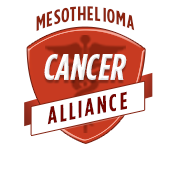By David Haas
In this 3 part series we have gone over nutrition tips for nausea, bruising and hair loss. Today, in the final installment, we’ll cover hair loss.
The treatments that often follow a cancer diagnosis can be just as intimidating as the diagnosis itself. Chemotherapy and radiation, commonly used in the fight against cancer, often have harsh side effects that interfere with everyday life. When used properly, a nutritious diet can help minimize the impact of these side effects.
When thinking about possible cancer treatment side effects, chemotherapy and hair loss seem to go hand in hand. When preventing hair loss, nurturing your hair right down to its follicle is key. For proper hair nourishment, try to avoid foods with added sugar. To encourage hair growth, talk to your doctor about adding supplements such as biotin, vitamin B12 and folic acid to your daily regimen. In addition, eating more fish can help prevent hair loss due to its rich source of vitamin D and omega-3 fatty acids. To further decrease hair loss, increase your protein consumption by eating more meats, eggs and beans.
While a nutritious diet may not cure cancer, it certainly goes a long way to ease some of the troublesome side effects commonly associated with treatment. Even though the possible reactions can be tough, you can manage them with an appropriate diet. Thanks for joining me over the last 3 weeks. For future posts from me, check here: http://www.mesothelioma.com/blog/authors/david/ and of course, continue to follow the blog here at http://rubberbanditz.com/blog
About the Author:

Joining the MCA in 2011, David Haas is the Director of Awareness Programs. In addition to researching much of the information available to our site’s visitors, David often blogs about programs available and campaigns underway at the Mesothelioma Cancer Alliance. David is a fitness enthusiast who frequently runs, climbs, and bikes for enjoyment. He is also very involved in outreach associated with awareness about the dangers of asbestos for many different organizations and groups of people.
Read more: http://www.mesothelioma.



